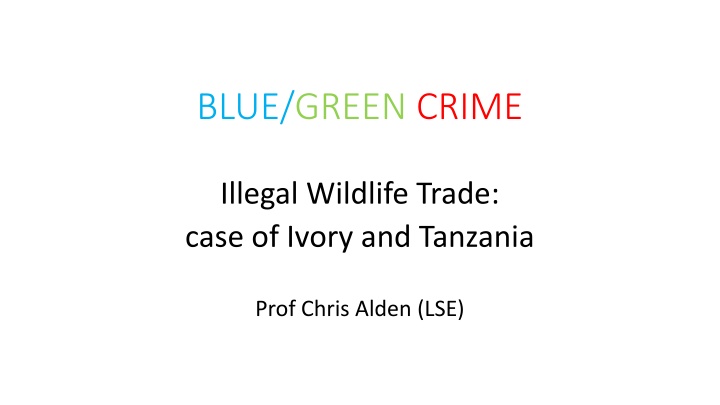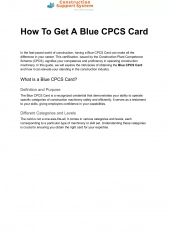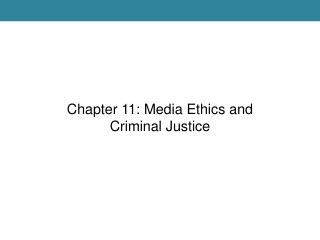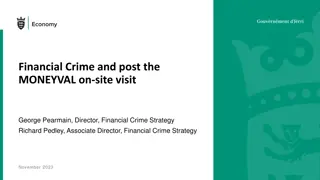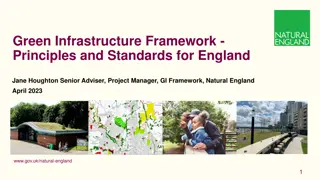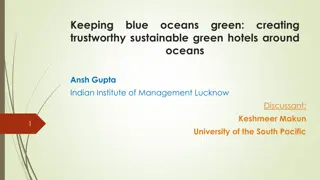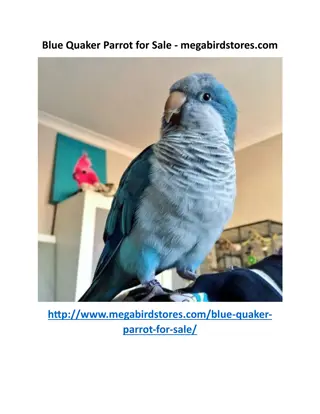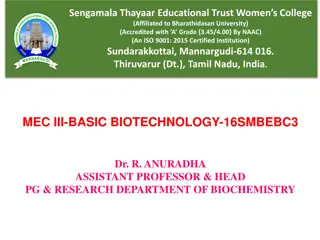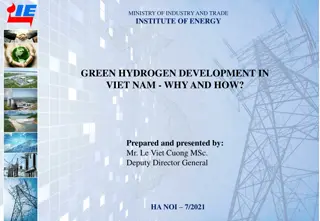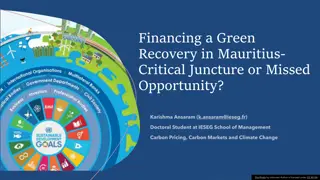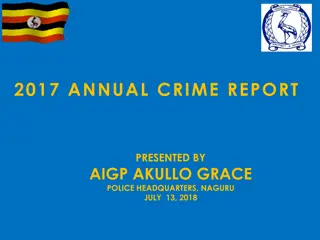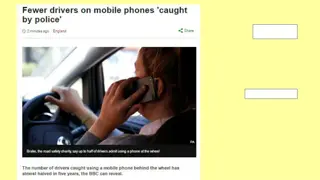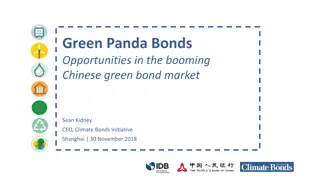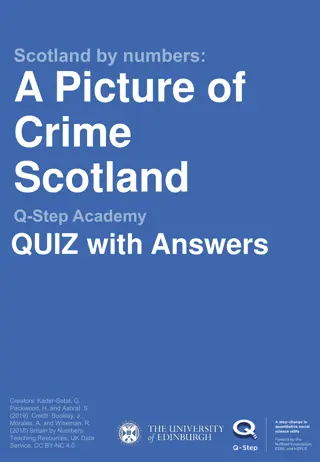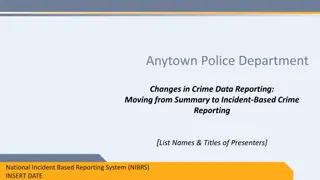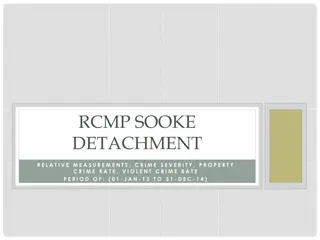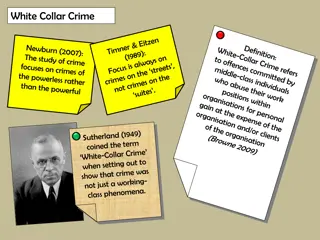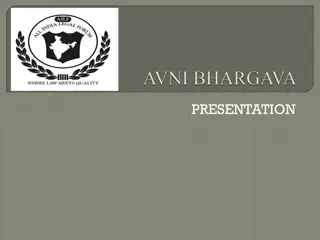BLUE/GREEN CRIME
This update covers the collaborative registration procedure (CRP) aiming to accelerate country registration of prequalified in vitro diagnostics (IVDs) through information sharing between WHO PQ and National Regulatory Authorities for quicker decision-making and optimization of resources. The CRP involves key principles, such as voluntary participation, ensuring product sameness, and maintaining confidentiality of shared data. Progress updates include signed CRP agreements by NRAs from 13 countries, with three IVDs successfully registered using the CRP approach. The update highlights the importance of CRP meetings and dossier reviews, showcasing efforts in countries like Rwanda, Nigeria, and more since its introduction in 2021.
Download Presentation

Please find below an Image/Link to download the presentation.
The content on the website is provided AS IS for your information and personal use only. It may not be sold, licensed, or shared on other websites without obtaining consent from the author.If you encounter any issues during the download, it is possible that the publisher has removed the file from their server.
You are allowed to download the files provided on this website for personal or commercial use, subject to the condition that they are used lawfully. All files are the property of their respective owners.
The content on the website is provided AS IS for your information and personal use only. It may not be sold, licensed, or shared on other websites without obtaining consent from the author.
E N D
Presentation Transcript
BLUE/GREEN CRIME Illegal Wildlife Trade: case of Ivory and Tanzania Prof Chris Alden (LSE)
1 Context Illegal wildlife trade $5-23 bn annually, w/ retail values of ivory, rhino horn etc sometimes equal to heroin but w/out penalties (May 2017) CITES ban on ivory sale in 1989, allowed recovery so by 2006, elephant population 550,000 (savannah + forest) Demand Chinese govt purchase of ivory stock in 2008, plus opening of ivory carving factories as part of heritage industry, produced market signal that re-energised trade Poaching resulted in elephant population falling to 440,000 by 2016 Tanzania s Selous Reserve, Africa s wildlife bastion w/ 142,700 elephants in 2004, lost 66% of population to poaching btw 2007- 2015, to 43,000. Tanzanian police, customs unable to stem poaching or transit to Asia
2 Networks and Process: a two sided network Chinese TOCs play key role in financing, transit and marketing of ivory from Tanzania to China Use of DNA sampling of seized stocks in Hong Kong etc prove sourced from Tanzania s Selous Reserve and northern Mozambique s Niassa National Park But evidence pointed to significant Tanz govt and local community involvement too SUPPLY Tanzania govt, led by Pres Jakaya Kikwete play key role in facilitating supply by agreeing to one-off sale of ivory stocks in 2008, then petitioning for further sales Mohsin M Abdallah Shein, CCM nat l exe, owner of 16 hunting concessions in Selous, later accused of facilitating poaching in Reserve Abdulrahman Kinana, owner of shipping company and CCM nat l exe, caught w/ illegal ivory in his vehicles in 2009
3 Networks and Process Interviews w/ Selous guides said Chinese road construction workers contacting local communities and advertising payment for ivory (Alden & Harvey 2021) Workers would fly drones over Selous Reserve to est where elephants were, then alert poachers to target Ivory collected then transported to Dar es Salaam port on local haulage vehicles and through collusion w/ local police at road blocks Tanz police poorly paid provides inducement Shipped overland incorporated in timber stocks, sometimes along w/ pangolin scales
3 Networks and Process Transportation to Asian markets Chinese firms, w/ Tanz employees, store ivory for transhipment Shuidong Gang worked through front company based in Zanzibar dealing in sea cucumber (EIA 2019) Traditional Shuidong city/sub-region in Guangdong province involved in sourcing marine products in China coast/SE Asia; opened office in Zanzibar in late 1990s Clan/family based membership Tanz employees organise container shipment, work w/ bribed Tanz custom officials to get export paperwork and clear Included along w/ existing shipments of legal marine products Onward shipment to ports in Vietnam, Malaysia, South Korea, then to HK/China and overland to warehouses in Shuidong city (EIA 2019)
4 Politics, police and enforcement National Politics and Anti-Poaching Campaign Election of John Magufuli to presidency in 2015 brought change in national govt approach to China and to Chinese financed projects Saving Tanz tourism industry and concern re: Chinese expanding role in eco Aggressive enforcement of anti-poaching and break supply chain of corrupt officials and syndicates ( shoot to kill ) Set up special Wildlife Unit, under Robert Mande, working w/ PAMs (NGO) to track and trace poaching to transit Head of PAMS murdered by contract killing in August 2017 Change in law on economic crimes to include illegal wildlife trade Plea-bargaining introduced which enabled judiciary/police to gain new insights into networks
4 Politics, police and enforcement Ministers and ruling party MPs arrested and accused of involvement in ivory trade in local press and in parliament Arrest of Ivory Queen , Yang Fenglan, in 2015 and sentenced to 20 years in a Tanzanian prison in 2019 along with two Tanzanian colleagues, Salivius Matembo and Manase Philemon. Further arrests in 2020 were dealt w by release on bail/deportation. Market Signal: China bans ivory trade in 2017 and police close markets in mainland China, arrest illegal traders Border countries (Cambodia, Laos, Vietnam) become sites of markets Magufuli s death in March 2021 and rise of Kikwete faction in CCM party suggests Chinese link reviving, though unclear if how that will impact illegal wildlife trade and ivory trade in particular.
Bibliography Chris Alden and Ross Harvey (2021). Chinese Transnational Criminal Organisations and the Illegal Wildlife Trade in Tanzania. Channing May (2017) Environmental Investigation Agency (2017). The Shuidong connection: exposing the global hub of the illegal ivory trade London: EIA, 1-22. Traffic, 2008. What s driving the wildlife trade? a review of expert opinion on social and economic drivers of the wildlife trade and trade control efforts in Cambodia, Indonesia, Laos DR and Vietnam. TRAFFIC International and World Bank, 1-120. Wasser, S., W. Clark, O. Drori, E. Kisamo, C. Mailand, M. Benezetha and M. Stephens, 2008. Combatting the illegal trade in elephant ivory with DNA forensics. Conservation Biology 22(4).
